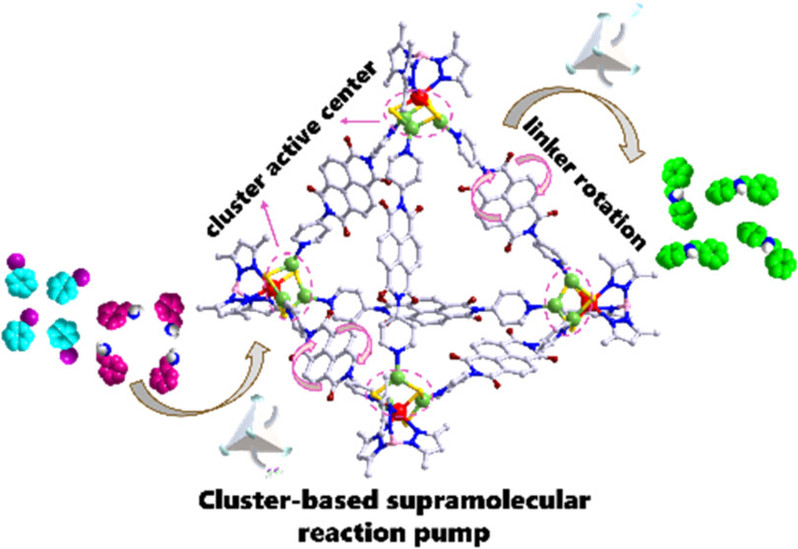Design and Synthesis of a Cluster-Based Supramolecular Reaction
Pump for the Efficient Catalysis of Amination Reactions
Yun-Hu Deng1,2,3, Brendan F. Abrahams4, Jian-Ping Lang1,2,3(郎建平)*
1College of Chemistry, Chemical Engineering and Materials, Soochow University, Suzhou 215123, P. R. China
2State Key Laboratory of Organometallic Chemistry, Shanghai Institute of Organic Chemistry, Chinese Academy of Sciences, Shanghai 200032, P. R. China
3State Key Laboratory of Coordination Chemistry, School of Chemistry and Chemical Engineering, Nanjing University, Nanjing 210093, P. R. China
4School of Chemistry, University of Melbourne, Victoria 3010, Australia
J. Am. Chem. Soc.2025, 147, 18219−18229
Abstract: Although discrete self-assembled cage compounds with single-metal centers mimicking natural bioreactors for catalysis have been extensively investigated, studies on those with multimetal active centers, i.e., cluster active centers (CACs), have been less explored. Herein, we present the design and synthesis of a novel cluster-based supramolecular reaction pump (CSRP-1) featuring four CACs that facilitate catalysis.CSRP-1 holds a cationic supramolecular tetrahedral structure, comprising four WS3Cu3 clusters, each positioned at one vertex and interconnected by dipyridyl linkers. Substrates, including aryl iodides or primary or secondary amines, enter the cage cavity by replacing N,N-dimethylformamide at the CACs through weak Cu···I/N interactions. This design leverages the coordinatively unsaturated Cu centers within each CAC to activate the substrates, resulting in efficient catalytic amination. CSRP-1 works like a dynamic pump, and upon completion of the reaction, the amine product is expelled from the cavity, allowing the catalytic cycle to repeat with maintained efficiency. Theoretical calculations complement the experimental findings, providing key insights into the catalytic mechanism and the synergistic role of the clusters and linkers. This work offers a new catalysis paradigm with broad applicability to various organic reactions.

Article information: https://doi.org/10.1021/jacs.5c04980